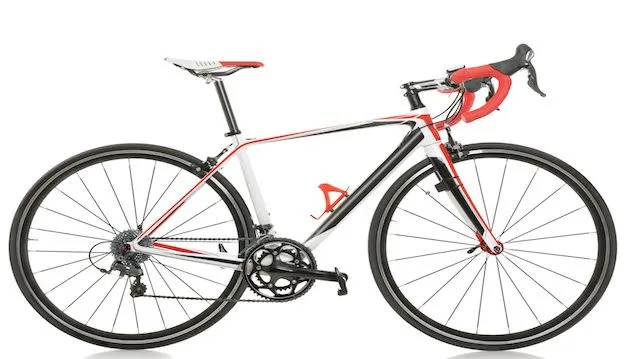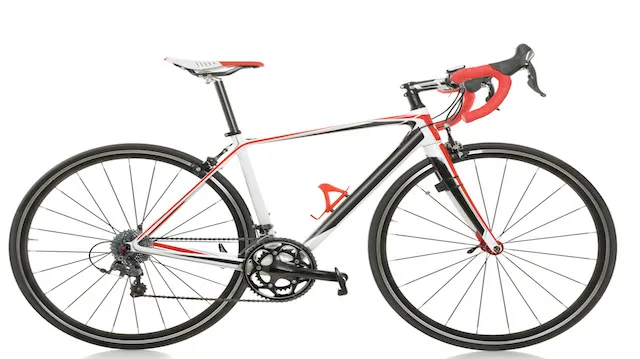
- Share on Facebook18
- Share on Pinterest
- Share on Twitter
What if I told you that you could lower your monthly electric bill? I’m not talking about things like installing low wattage light bulbs or remembering to turn off lights, although those ideas are definitely worth considering. What if there was a way to slash your power bills and shrink your muffin top at the same time?
Introducing the bicycle generator!
All over the world people are coming up with ingenious ways to create power. A lot of interesting options are out there, all of which have their pros and cons. One of these options is the bike generator. It is a small generator run by bicycle power. The idea is that you simply hop on your bicycle in the morning, or anytime you need more power, and pedal away. You are burning calories and either directly powering or charging household devices, or sending power into a battery of some kind for use at a later time.
But how does this work?
Well to start with, let’s take a step back and look at what generators are and how they work.
A generator is very similar to an electric motor in construction. Motors and generators have a shaft that spins inside of a metal cylinder wrapped in copper wire.
A motor uses an external power source to energize the coils of wire creating an electromagnetic charge that causes the shaft inside to spin. With a generator, an external force rotates the shaft at high speeds, which causes the same buildup of electromagnetic charge. The electric charge is channeled into the wires that run to a power inverter, which converts the power into either 110v or 220v power, at which point it is usable for most standard appliances.
So if a generator needs an external force to spin the shaft to generate power, where does this force come from? There are many different types of generators. There are combustion-powered generators that use diesel, gasoline, or propane to run an engine, which again has a shaft spun by pistons and gears. The generator shaft is attached to the engine shaft, and as the engine runs, it spins the generator shaft creating power. This is one of the most common types of power generation, but it is closely followed by wind and water generation. Turbines, windmills and dams both create power by using water or air to spin the generator shaft.
Essentially, the bike generator uses the same principal except on a much smaller scale — and the driving force that spins the generator shaft is you!
How does this help me?
Bicycling is a great way to exercise for several reasons. The average person riding a bicycle for approximately 30 minutes will burn close to 375 calories. That is a pretty decent workout. Biking is also good cardiovascular exercise and is a great low-impact alternative to running.
Many people who have had hip, leg, or foot surgery can no longer run for long distances; the jarring impact takes a toll on joints and muscles. Biking provides even, steady pressure and resistance against muscles without being as rough on the joints.
So, if biking is healthy for you, why not turn it into an exercise with a dual purpose? Instead of buying an expensive exercise bike, you could build a bike generator and turn your workouts into a “powerful” experience! Perhaps you could even power a computer or TV you are watching. Talk about multitasking!
How can I build one?
 The basic concept is to use a setup where the back wheel of the bike is held off the ground and spins freely. An extra gear can be added to the wheel so an additional bike chain can run from the wheel to the generator. The chain rotates the shaft of the generator as you peddle and spin the back wheel of the bike. Then a small inverter is needed to convert the power and charge a battery or run an appliance. A multi-meter can be connected to the device so you can monitor the power production.
The basic concept is to use a setup where the back wheel of the bike is held off the ground and spins freely. An extra gear can be added to the wheel so an additional bike chain can run from the wheel to the generator. The chain rotates the shaft of the generator as you peddle and spin the back wheel of the bike. Then a small inverter is needed to convert the power and charge a battery or run an appliance. A multi-meter can be connected to the device so you can monitor the power production.
The only thing you need after all that is some motivation and a good exercise outfit.
Remember this may not be the easiest way to power your home, but it can be a really good way to learn how much time or energy is required to produce the power most of us take for granted.
Maybe if we had to physically work to power our appliances and devices, we would use our time more wisely. We would certainly be improving our health for the sake of technology, instead of allowing technology to make us lazy and fat. Now that is a novel idea!
—Kyle Kramer
Kyle is an outdoor enthusiast with a passion for nature and sustainability. When he is not writing, you will find him in his workshop crafting with local wood, hiking in the Arizona mountains, fly fishing, horseback riding or putting together a healthy meal in the kitchen.
Sources:
http://www.popularmechanics.com/technology/gadgets/how-to/a10245/pedal-power-how-to-build-a-bike-generator-16627209
http://www.bicycling.com/training/weight-loss/cycling-calories-burned-calculator
http://www.los-gatos.ca.us/davidbu/pedgen.html
- Share on Facebook18
- Share on Pinterest
- Share on Twitter

